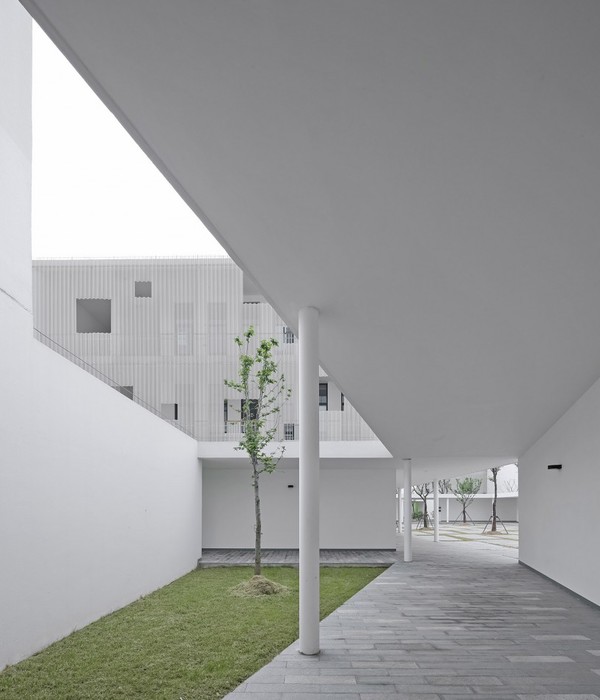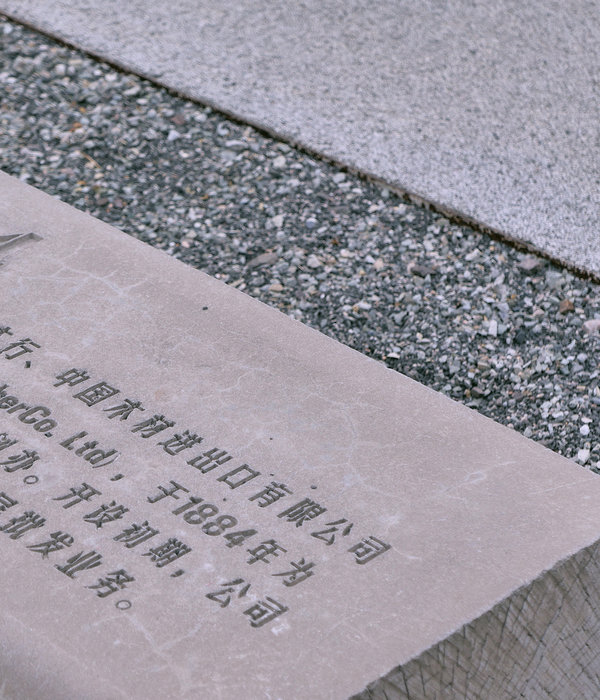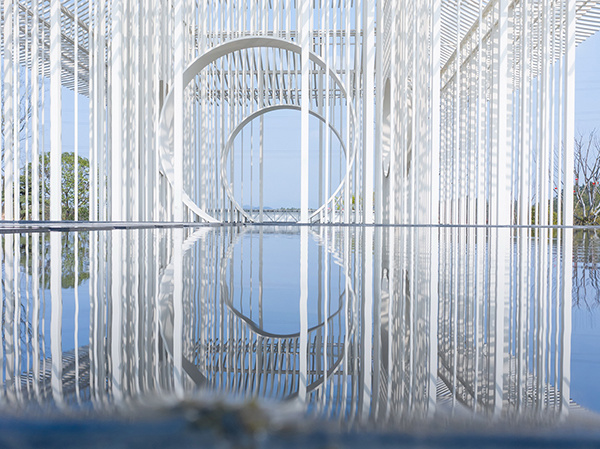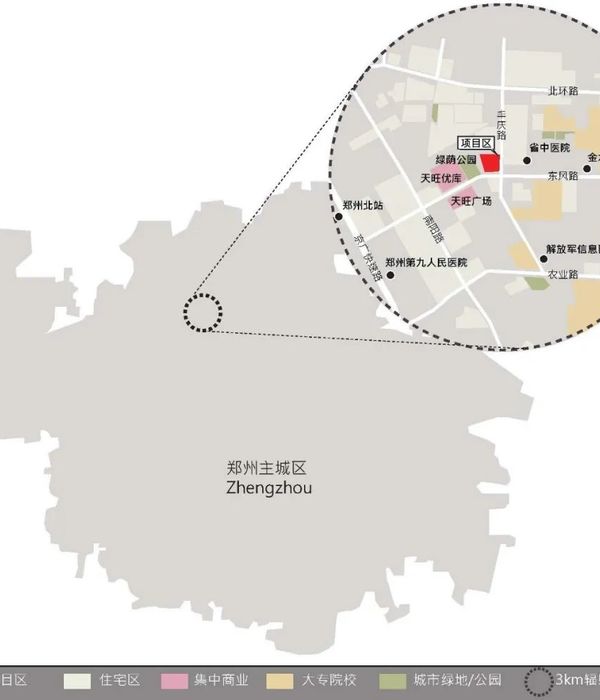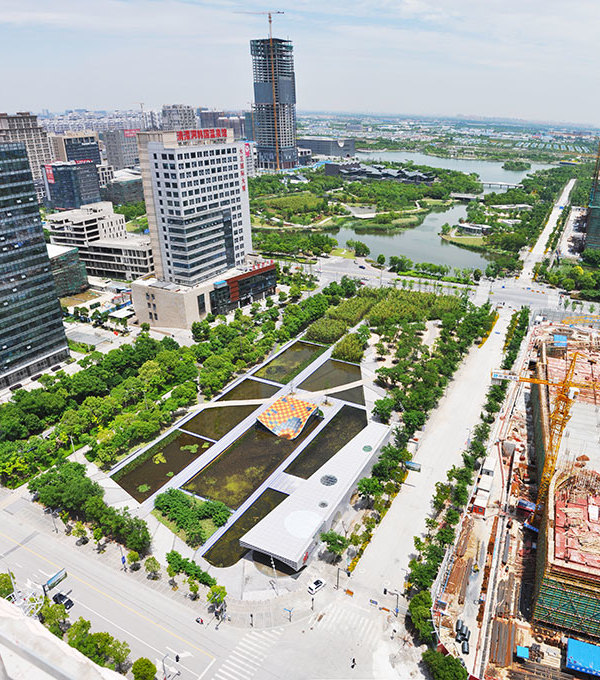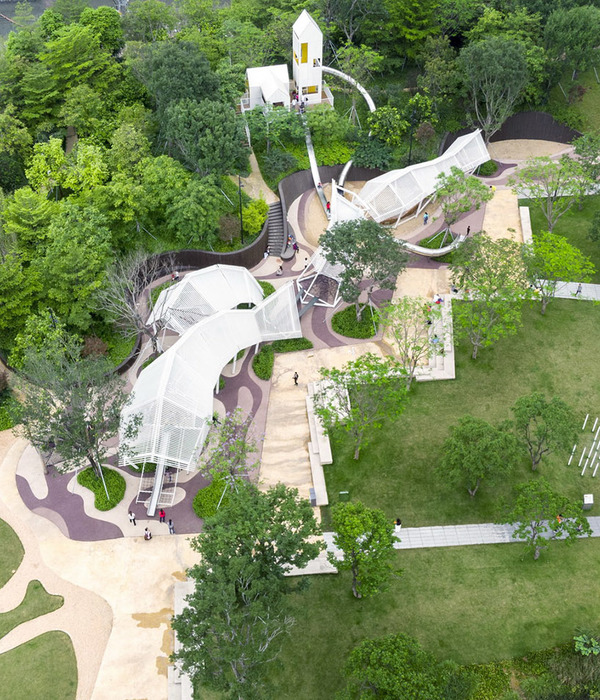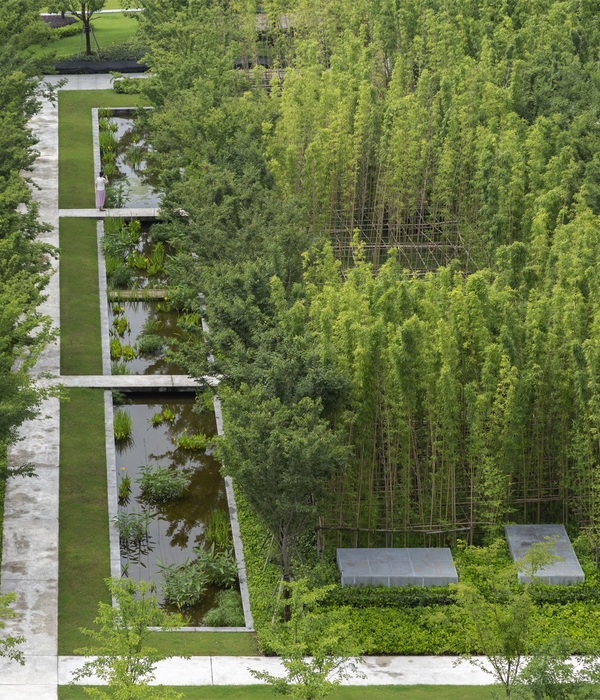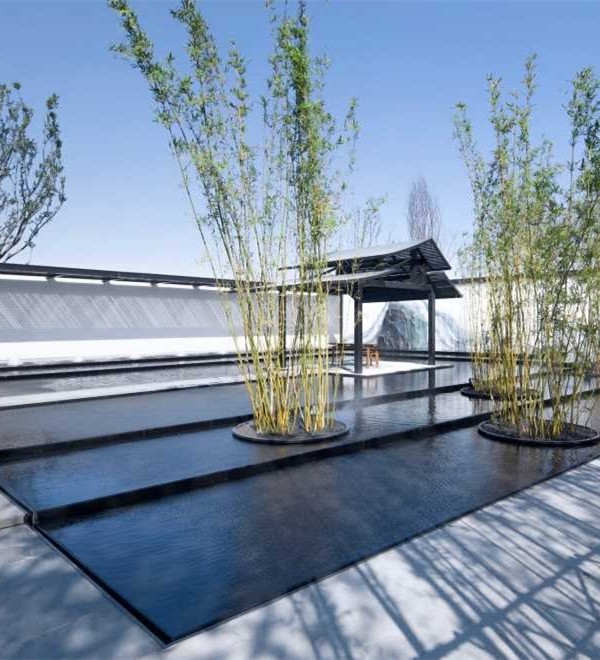来自
ASLA
Low-cost and High-efficiency: Use Low-Impact Development Facilities to Build an Ecological Sewage Treatment System for Remote Areas |
GVL Design Group
项目陈述
Project Statement
全球许多不发达地区都遭受着污水处理不当引起的一系列问题和后果,例如土壤污染、地下水污染和生物多样性的丧失,这也对人类福祉造成了负面的影响。与此同时,此类地区的问题往往还会因为薄弱的经济和落后的基础设施而进一步恶化。因此,要解决不发达地区的污水处理问题,相比于高成本的工程解决方案,不如采用维护成本更低而运行效能更高的景观解决方案。
位于中国南部偏远山区的飞来峡水利试验基地被选为应对以上挑战的研究对象。该项目采用“以设计进行研究”的方法,通过田野调查、雨水管理适应性建模(SWMM)和正交试验,从建设成本、维护成本、基质和植物净化性能等方面对不同低影响开发(LID)设施组合的污水处理策略进行了定量分析和比较,最终为不发达地区的污水处理问题找到了“低成本,高效能”的解决方案。
Many undeveloped areas in the world are affected by a series of problems caused by improper sewage treatment, such as soil contamination, groundwater pollution and biodiversity loss, leading to negative effects on human well-being. The issues in these areas are usually further exacerbated by weak economic performance and poor infrastructure. Rather than high-cost engineering solutions, the focus should be on landscape approaches with low maintenance costs and high operational efficiency to solve sewage treatment problems in undeveloped areas.
The Feilaixia Water Conservancy Experimental Base in the remote mountainous area of South China has been selected as a research case for these challenges. This project adopts the method of “research by design”, through field study, adaptive modeling Storm Water Management Model (SWMM) and orthogonal experiments, to quantitatively analyze and compare the wastewater treatment strategies of different Low Impact Development (LID) facility combinations in terms of construction cost, maintenance cost, substrate and the plant’s purification performance. The result of this project demonstrates a “low-cost-high-efficiency” solution for sewage treatment issues in undeveloped areas.
▲项目实施前后对比:研究团队将原本生态状况恶劣的污水池及其周围环境改变为优美的景观花园和生态友好的栖息地。Before and after. The research team transformed the original poor ecological sewage pond and its surrounding environment into a picturesque landscape garden and eco-friendly habitat.
项目说明
PROJECT NARRATIVE
研究背景
根据联合国环境规划署(UNEP)在《健康环境,健康人类》(内罗比,2016年)报告中公布的数据,世界上超过80%的污水是在未经处理的情况下进行排放,尤其是在发展中国家的偏远地区。污水造成的环境污染威胁着人类的健康,然而,传统城市地区的污水处理设施需要高昂的建设和维护费用,因此在实现上存在很大难度。与传统工程方法不同的是,该项目采用了“以设计进行研究”的方法,将飞来峡水利枢纽受污染的中心池区及周边区域作为研究的核心。该场地的位置偏远,缺乏城市基础设施且建设资金有限,是一个典型的不发达地区。此外,研究区域、办公区和居住区的污物均只经过基本的二级净化池处理就直接排入园区的水池,造成池内水质逐年恶化,甚至难以符合耕种前的农业灌溉要求。同时,改造的工作也受到资金短缺的限制,导致水池及其周边的环境和生物多样性遭到了严重破坏。
研究问题
景观策略是否能够取代高成本的传统工程方法,转而采用“地维护成本,高运转效能”的生态型处理方法来解决不发达地区的污水处理问题?该项目试图解决以下两个具体问题:
(1)有哪些高效且低影响开发(LID)的污水处理设施?它们能否同时作用于雨水和生活污水造成的地表水污染的处理?
(2)如何在低成本的约束下有效地组合不同类型和比例的低影响开发(LID)设施,以达到最佳的净化效果,实现“低成本,高效能”的目标?
研究方法
基于上述的研究问题,景观设计师带领团队与污水处理、植物学和水利工程领域的专家进行合作,针对不同的专业内容展开咨询。主要的研究方法如下:
(1)文献回顾。研究与污水处理技术相关的各种书籍和出版物,分析不同湿地植物和基质组合的污水净化能力,为选择合适的LID设施,以及列出具有高效污水净化能力的试验植物和基质的清单提供参考。
(2)现场作业。对选定的植物和基质进行测试,并收集实际表现的数据。
(3)市场调研。基于对当地材料供应商和培养地的田野调查,结合网络大数据确定出具有高性能价格比的材料。
(4)情景模拟分析:第一阶段:研究团队根据预选的四种LID设施(人工湿地、雨水湿地、湿塘和人工浮岛),在雨水管理模型平台(SWMM)中建立模型。采用控制变量法对LID的污水处理效率进行模拟分析,并对每种LID的建造和维护成本、功能维度和服务寿命进行叠加分析。第二阶段:根据正交试验的原则,将4个LID设施作为组合要素,并将每个因子的面积作为变化的二级要素。在此基础上,根据二级要素的排列组合模拟出9种组合方式,并在SWMM平台中分别模拟径流控制率、TSS(总悬浮物)和TP(总磷含量)的去除率,并叠加计算建造和维护成本,已确定实现“低成本,高效能”的最佳组合方式。
研究结果
(1)人工湿地、雨水湿地、湿塘和人工浮岛四种LID设施的组合,能够同时满足处理雨水径流污染和生活污水的要求,因此可以替代传统的工程方法。
(2)当四种LID设施,即人工湿地、雨水湿地、湿塘和人工浮岛的占比分别为4.76%,15.87%,71.43%和7.94% 时,污水处理策略在该场地上具有最佳效能。
设计策略
为了最大程度地提高场地内LID设施的容量,研究团队根据研究结果提出了两条符合场地特征的创新策略:
1. 为解决场地内的巨大高差,将人工湿地设计为阶梯状。一方面,它可应对场地的8米高差,另一方面可以最大化水体面积,从而实现最优的去污效能,与此同时还能提供更多潜在的景观展示机会。
2. 为增加人工湿地与污水的接触面积和时长,引入一种全新的基质布局方式,将传统的横向布局改为纵向,从而达到更高的净化效率。
成果监测
该项目继2018年完成后已持续运行了三年(截止2021年)。经过跟踪监测,研究团队使用Hash多参数水质在线检测仪对BOD5、NH3-N、TP、pH和DO等指标进行了监测。根据监测数据,该地的水质已恢复到地表水III类标准(根据《中华人民共和国地表水环境质量标准》:适用于集中式生活饮用水区、鱼虾类越冬场、洄游通道及游泳区),并逐步建立了多样且稳定的水生态系统。
意义
该研究项目以250元人民币/平方米的较低建设成本解决了当地的污水处理问题,相较于传统工程方法节约近40%。同时,原本生态状况较差的污水池及其周边环境被改造成风景优美的景观花园和生态友好型的栖息地。本次研究项目为解决偏远地区的污水处理问题提供了“低成本,高能效”的景观策略,它作为水生态技术示范区得到了推广,并收获了全国范围的关注。该项目还在科普方面发挥了作用,有助于提高公众的生态意识。更为重要的是,该研究具有很强的可复制性,它为全世界受到污水问题困扰的地区提供了普适性的解决方案,能够帮助改善不发达地区和偏远地区的基本生活条件。
▲挑战:生活污水排放带来的严重污染和困扰。全世界80%的污水是在未经处理的情况下被排放到环境中,特别是生活污水的排放威胁着河流与湖泊的生态环境以及人类的健康。Challenge: Severe domestic sewage discharge pollution and contamination. More than 80% of the world’s wastewater is discharged into the environment without treatment, in particular, the discharge of domestic sewage threatens the ecological environment of rivers and lakes, as well as human health.
▲场地分析:改造前的环境问题。由于地理位置偏远且缺乏资金,该场地的生活污水排放问题一直未能得到妥善解决。如何以低成本、高能效的模式处理场地中的污水,是本次研究的目标所在。Site Analysis: Environmental issues prior to transformation. Due to the remote location and lack of funds, the domestic sewage discharge issues of the site have not been properly resolved. How to treat the site sewage in a low-cost and high-efficiency mode is the goal of this study.
▲策略框架:对低影响开发(LID)设施、植物和基质的策略性选择是解决问题的关键。Strategy Framework. Strategic selection of LID facilities, Plants and substrates is the key to the solution.
▲方法:第一阶段的情景模拟分析。单一的LID设施并不能充分解决生活污水的处理问题,需要进一步研究更优的解决方案。Method: The first stage of scenario simulation analysis. Single LID facilities can not solve the domestic sewage problem adequately, and further investigation for better solutions is needed.
▲方法:第二阶段的情景模拟分析。当人工湿地、雨水湿地、湿塘和人工浮岛的占比分别为4.76%,15.87%,71.43%和7.94% 时,污水处理策略在该场地上具有最佳效能。Method: The second stage of scenario simulation analysis. When the four LID facilities of constructed wetland, rainwater wetland, wet pond and artificial floating islands account for 4.76%, 15.87%, 71.43% and 7.94% respectively, the sewage treatment strategy has the optimal efficiency in the site.
▲试验:基质的挑选。实验结果:我们选择沸石、生物陶粒和凹凸棒粘土作为主要填料,它们都具有很强的吸收能力且成本低廉。Test: Substrates selection. Experimental results: we chose zeolite, biological ceramsite and attapulgite as the main fillers, because they have strong absorption capacity and cost efficiently.
▲试验:植物的挑选。实验结果:我们基于污染物吸收能力、低成本和低维护三个方面挑选了15种水生植物,并在种植后观察期生长情况。Test: Plant selection. Experimental results: We have selected 15 aquatic vegetation species based on three aspects: pollutant absorption, low cost and maintenance, and observed their growth after planting.
▲系统:实验结论与设计相结合。实验结果是景观设计的重要依据和基础,能够让项目的实施和使用更加科学,同时为多学科合作提供示范。System: Combination of experimental conclusion and design. The experimental results are an important basis and foundation for landscape design, which is conducive to the implementation and use of the project more scientifically, and also become a model of interdisciplinary cooperation.
▲实施:从概念到落实。在项目完成三年后,当地的水质已逐步得到改善,植被和环境也慢慢恢复,为园区内的工作人员提供了舒适的办公环境。Implementation: From concept to completion. From design to implementation, the project has been completed for three years, the water quality has been gradually improved, the vegetation and environment have been gradually restored, providing a comfortable office environment for the staff of the park.
▲多功能基础设施:除了生活污水外,由于8米的高差,场地还存在洪泛的问题。为此,在系统的设计中也考虑了雨水的消减和储存问题。Multifunctional infrastructure. In addition to domestic sewage, due to the height difference of 8 meters, there is also the problem of flooding on the site. Therefore, in the design of the system, the problems of rainwater reduction and storage are also considered.
▲设计策略:通过化学技术、物理技术和生物技术的结合,该项目优化了人工湿地的污水处理能力并提高了净化效率。Design strategy. Optimize the sewage treatment capacity of constructed wetlands through the combination of chemical technology, physical technology and biomanipulation, and improve purification efficiency.
▲建造过程:在施工过程中,我们重点关注了边坡修整、植被种植和管道铺设等工作,以保证设计方案的顺利实施。Construction process. In the construction process, we pay great attention to the slope trimming, vegetation planting, pipeline laying, etc., to ensure the smooth implementation of the design scheme.
▲完工后的照片:完工后的场地呈现出更贴近原始的景观,除了必要的维护之外几乎无需人为干预,这也符合我们对场地的期望。Completion photo. After the completion of the base landscape tends to be more original, in addition to the necessary maintenance, almost no human intervention, which is in line with our expectations of the site.
▲生态效益:监测数据表明,场地内的水质已逐渐恢复至地表水Ⅲ类水质标准,并逐渐形成了多样化的、稳定的水生态系统。Ecological benefit. According to the monitoring data , The water quality in the site is gradually recovered to the Grade III surface water quality standard, and a diversified and stabilized water ecosystem is gradually formed.
▲社会效益:该项目作为水生态技术示范区的案例得到了推广,并收获了全国范围的关注。此外,它还发挥了科普作用,有助于提高公众的生态意识。Social benefit. This project has been promoted as a water ecological technology demonstration area and has received visits and attention from all over the country. It plays a role in science popularization and helps to enhance the public’s ecological awareness.
Project Narrative
Research Background
According to the data released in the Healthy Environment Healthy People (Nairobi, 2016) by the United Nations Environment Programmed (UNEP), more than 80% of the world’s sewage is discharged into the environment without treatment, especially in remote areas in developing countries. Environmental pollution caused by sewage threatens human well-beings, however, the traditional sewage treatment facilities for urban areas require high construction and maintenance costs that are difficult to implement. Unlike traditional engineering approaches, this project adopts a “Research through Design” method, uses the 15,000m2 contaminated central pond area and surrounding areas of the Feilaixia Water Conservancy Hub as the research core.The site is located in a remote area, with under-developed municipal infrastructure and limited construction funds, typical of a undeveloped area. Furthermore, the sewage from the research zone, office and living area on the site have been only treated with basic secondary septic tanks, and directly discharged into the pond of the park. The water quality of the pond has deteriorated year by year, which does not even meet the requirement for agricultural irrigation prior to the works. Meanwhile, the renovation was restricted due to a shortage of funds, which result in serious damage to the environment and biodiversity of the pond and surroundings.
Research Questions
Can landscape responses replace the high- cost traditional engineering methods and using ecological sewage treatment methods with “low maintenance cost and high operation efficiency” to solve the sewage treatment problems in the undeveloped areas? The project aims to address:
(1) What are the effective Low Impact Development (LID) facilities for sewage treatment? Can these approaches simultaneously act on the treatment of the surface water pollution caused by rainwater and domestic sewage?
(2) How to effectively combine different types and proportions of Low Impact Development (LID) facilities under low cost constraints to achieve the optimal purification performance and achieve the goal of “Low cost and High efficiency”?
Research Methods
Based on the above research questions, landscape architects led the research of the project and collaborated with specialists in the fields of sewage treatment, phytology and water conservancy engineering to consult on various specialist areas.
The primary research methods are as follows:
(1) Literature Review: Various books and publications related to sewage treatment technologies. Sewage purification capacities of different wetland plants and substrates mixes were analyzed to inform the selection of suitable LID facilities as well as a list of experimental plants and substrates with high-efficiency sewage purification capacity.
(2) Field Work: Selected plants and substrates are tested and the data is collected for their actual performance.
(3) Market Research: Based on the statistical analysis of the field research on local material suppliers and nurseries combined with online big data, the materials with high-efficiency cost performance are determined.
(4) Scenario Simulations Analysis: The first stage: The research team is to build models on the Storm Water Management Model (SWMM) platform based on the preselected four types of LID facilities including: constructed wetland, rainwater wetland, wet pond and artificial floating islands. The control variates method will be used to simulate and analyze the pollutant treatment efficiency of the LID, and the construction and maintenance cost, the scale of the function and the service life of each LID were superimposed and analyzed.
The second stage: According to the principle of the orthogonal experiment, four LID facilities were used as combination factors, and the area of different factors was changed as the second-level factor. Based on the second-level factors, 9 types of combinations will be simulated based on the permutations and combinations of the second-level factors. The runoff control rate, the removal rate of TSS (total suspended solids) and TP (total P) were simulated respectively on the SWMM platform, and the calculation of construction and maintenance costs are superimposed to determine the optimal combination mode to achieve Low-cost and High-efficiency.
Research Results
(1) The combination of four types of LID facilities including constructed wetland, rainwater wetland, wet pond and artificial floating islands, can both meet the requirements of treating storm water runoff pollution and domestic sewage at the same time, thereby replacing traditional engineering methods.
(2) When the four LID facilities of: constructed wetland, rainwater wetland, wet pond and artificial floating islands account for 4.76%, 15.87%, 71.43% and 7.94% respectively, the sewage treatment strategy has the optimal efficiency on the site.
Design Strategies
In order to maximize the capacity of LID facilities on the site, the research team proposes 2 innovative design strategies which matches with site characteristics based on the result of the research.
1. To resolve the huge difference of elevation on site, the constructed wetland was designed as terraces. On the one hand, it resolves the height difference of 8 meters of the site, on the other hand, it maximizes the water body area, so as to maximize the decontamination efficiency, at the same time, it can also provide more potential for landscape opportunities.
Monitoring the Results
This project was completed in 2018 and has been in operation for three years. After tracking and monitoring, the Hash multi-parameter water quality online monitor is used by the research team to monitor water quality on BOD5, NH3-N, TP, pH, DO and other indicators. According to the monitoring data, the water quality on the site has recovered to Grade III surface water quality standard(centralized portable water source areas, fish and shrimp overwintering, migratory passages, and swimming areas according to the Surface water quality standards of the People’s Republic of China), and a diversified and stabilized water ecosystem is gradually established.
Research Significance
The research project solved the sewage treatment problem of the site with a relatively low construction cost of CNY¥250/㎡, saving nearly 40% of cost compared to traditional engineering methods. At the same time, the original poor ecological sewage pond and its surrounding environment is transformed into a picturesque landscape garden and eco-friendly habitat. This research project demonstrates a “low-cost-high-efficiency” landscape strategy to solve the problem of sewage treatment in remote areas. The project has been promoted as a water ecological technology demonstration area and has received visits and attention from all over the country. It plays a role in science popularization and helps to enhance the public’s ecological awareness. More importantly, this research is highly replicable and provides a universal solution for areas suffering from sewage issues all over the world, helping to improve basic living conditions in undeveloped and remote areas.
{{item.text_origin}}

